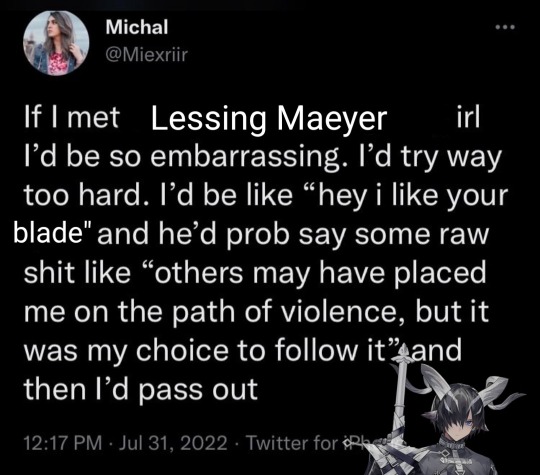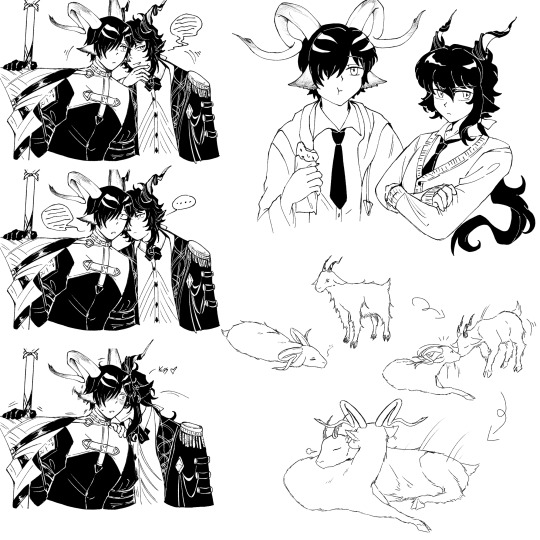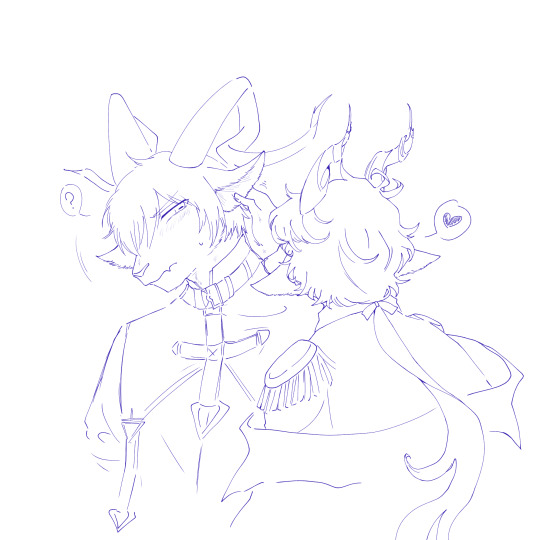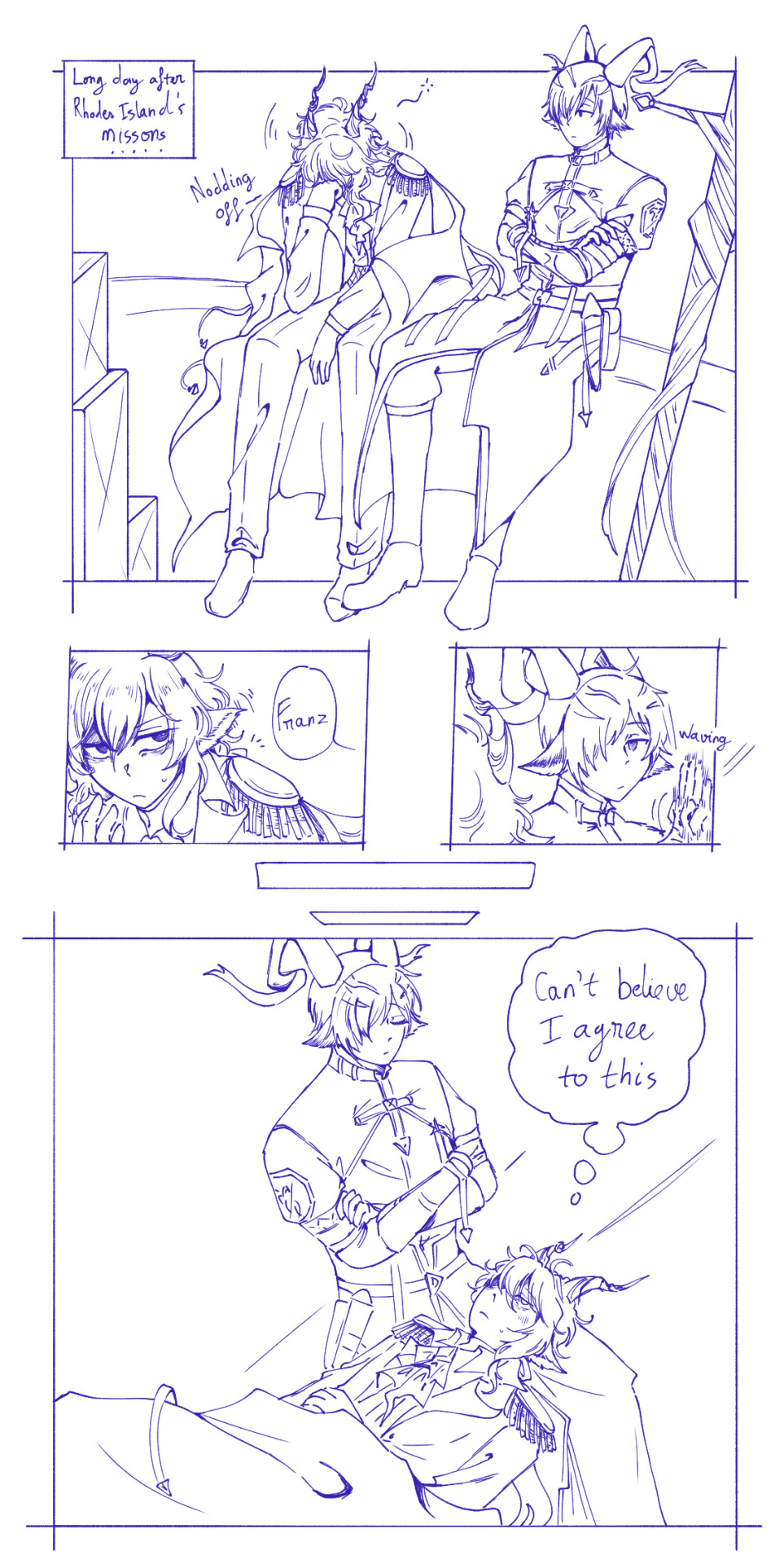#lessing maeyer
Explore tagged Tumblr posts
Text

136 notes
·
View notes
Text


14 notes
·
View notes
Text
Podcasting Dungeons & Dragons: How “The Adventure Zone” is Reviving Oral Storytelling
Topic: Podcasts, oral storytelling, “The Adventure Zone”
Date: 14 October 2019
Read time: 10 minutes
When I was young and visited my grandma’s house, I always asked her to read me Go, Dog. Go! by Dr. Seuss before I went to sleep. This was a reasonable request when I was little, but when I began to grow older, regularly reading chapter books on my own, I would still ask my grandma to read me Go Dog. Go! at the end of the night. It was something about how she sat at the side of my bed, squishing me up against the wall, and said those words that had been repeated many times before. And I am not alone in my fond memories of repeated oral story. People love repeated stories, ones told over and over: myths, narratives, family tales. We love these stories not only for their themes and the multitudes of love they contain, but because oral storytelling is a deeply human instinct: in 1998, a professor at the University of Texas at Austin described that “oral tradition… becomes story as it is retold, resung.” So where do podcasts of the modern age factor in? Podcasts are a medium of oral storytelling, and I plan to explore that idea through exploring the podcast “The Adventure Zone.” “The Adventure Zone’s” specific medium of storytelling and its enjoyed popularity teaches lessons about methods and mediums of story, and how they impact storytelling.
To understand how a podcast can do that, it’s important to know what “The Adventure Zone” is. “The Adventure Zone” is a series of publicized recordings (or, a podcast) created and recorded by the McElroy brothers (Justin, Travis, and Griffin McElroy), podcast-artists and comedians, with their dad. In it, they participate in and play a Dungeons & Dragons campaign they call “Balance.” “The Adventure Zone: Balance” has 69 episodes, and seven story arcs, amounting to over 75 hours. During the podcasts, the players not only play Dungeons & Dragons and fight monsters, but also develop each of their characters, and Griffin, the Dungeon Master of the game (for those who aren’t intimately familiar with D&D: he crafts the story and moderates the game), creates a web of story and plot throughout the 75-hour runtime of the campaign. There’s no way to tell how many people listen to “The Adventure Zone Podcast,” because there are dozens of podcast-streaming websites and no publicly posted number of listeners or listens; however, in the past few years, the show has enjoyed a boost of popularity and a geniune “following” of listeners. But why? What compels people spend dozens of hours listening to four men play Dungeons & Dragons?
As I mentioned previously, podcasts are one of the newest and most explosive forms of oral storytelling. While not many of the younger generation watch news on the television (or watch television at all), almost all of them listen to public radio or podcasts through an app. As Nicholas Mirzoeff discusses in his piece “How to See the World,” the newly created “global network” has allowed us to “create, send and view images of all kinds, from photographs to video, comics, art, and animation.” Podcasting is an aspect of this new global network and may be counted as an image shared through it. Most people own technology that gives them access to podcasts through the internet, and consuming their shared images is easier now than ever.
Through the medium of podcast, there is a certain shared experience akin to the shared experience of intimate oral storytelling. It harkens back to the days of shared story through oral connections, over a fire with friends or a family story not recorded in a written format but passed along through generations. As Juliette de Maeyer recognizes in her article “Podcasting Is the New Talk-Radio,” podcasts “bring you to places you’ve never been… give you the impression of sharing an animated kitchen-table banter... with a couple of friends. In that regard, podcasts are a “sensational” medium.” In “The Adventure Zone,” during long monologues by Griffin, the Dungeon Master, there’s often background music that recalls the musical theme used before in the campaign or arc, while Griffin narrates a story with meaningful themes of death, family, love, loss and loneliness. Certainly, “The Adventure Zone” is a sensational medium when it uses repeated music to elicit an emotional response. Additionally, this concept relates to Thomas Turino’s idea of artistic connections in his piece “Why Art Matters,” when he claimed that “the connections expressed through art flow from and create a deeper sense and a different type of understanding.” By using the repeated artistic expression of music in the podcast, the creators tap into a deeper level of understanding of the listeners. Many podcast creators do.
What comes from this emotional response and formed connection is an imagined community by the podcast-listeners. In “How to See the World,” Mirzoeff discusses Benedict Anderson’s theory of imagined communities: that all communities are imagined, because people in it have not truly formed a connection with all of the other members. Anderson describes imagined communities of nations, which often result in patriotism, or imagined communities of readers of newspapers, who feel connections with the readers of the same newspaper. In that case, listeners to podcasts are certainly members of an imagined community, both with the podcast artists (those who record podcasts), in the case that they feel an intimate connection through the oral tradition of storytelling, and with the other fans, in “fandom.” Two fans of the same podcast who have never met can form bonds across boundaries of nation and language because they have an imagined community of being two people who both really, really like this podcast.
But let us rewind a bit, and understand more about the oral medium of storytelling. I want to talk about the oral medium in general and why it’s so persuasive now in 2019. It’s clear that the younger generation of people are less interested in big media the way previous generations have been -- big media meaning CNN, ABC, Fox News and CBS. Even big news outlets like The Atlantic and Washington Post and The NY Times enjoy less recognition and popularity from Millenials and Gen-Z readers. Most people in this age group do not watch the news but instead listen to NPR on their favorite podcasting platform, or any other podcast and talk-radio medium recordings. There is good reason for this. As a Maeyer describes “big news” in 2019, it’s often clouded with “hateful trolls, hysterical fake news outlets, a news agenda led by Russian hackers, and a never-ending spiral of conspiracy theories.” The oft-repeated mantra of “fake news” has led to the younger generation’s rejection of big news outlets with a lack of trust, and it could also explain the younger generation’s attraction to podcasting and oral storytelling as a way to strip the spread of information down to individual voices and intimately shared connections.
If I allowed myself a paragraph to nerd out about “The Adventure Zone” in my article about “The Adventure Zone,” it’d go a bit like this: That’s not to discredit the importance of the creativity and outstanding qualities of “The Adventure Zone.” For my argument, it’s just one example of a podcast, when there are thousands of podcasts in the world, that connects to its listeners through the format of oral storytelling. But this podcast is the real deal for an example of how revolutionary podcasting can be as a contributer to storytelling. What other form of storytelling requires its consumers to listen and pay attention for almost 100 hours -- and they do it, quite willingly? And it’s not a bore -- “The Adventure Zone” podcast is carefully organized into seven different arcs, all with unique characters, different settings, connected through a complicated non-chronological plot. It’s an intricately woven story with fully developed and realized characters and relationships between them: romantic relationships, friendships, fully-developed and realistic portrayals of family. And one of the reasons why I think its portrayal of these relationships is so popular is because it is created by a family. This podcast is created by three brothers and a dad. They know what sibling relationships look like. They know what familial loss looks like. And the result of it is something that is so rarely created: a collaboration between a family. And, when it comes down to it, it’s also just a really funny podcast.
Justin: Uh, I’m, I’m playing, uh, a wizard.
Griffin: ‘Kay.
Justin: His name is spelled “T-A-A-K-O”.
Travis: So like “tay… tay-ko?”
Griffin: So like “tayko…”
Justin: “Tahk”… Well, I mean, the… It’s two “a”s so…
Griffin: Is your wizard named… Are you naming your goddamn wizard “Taco”?
Methods of communication and mediums of storytelling (or, more simply, the ways to tell a story) develop along with the rapidly changing world around us. That doesn’t have to be a bad thing. Podcasts are widely available to any person with an internet connection and a device to listen on. Creating friends and sharing connections with people who also love the same media is a beautiful thing, regardless of how empty the promise of an imagined community is. Also, one of the reasons I study humanities is because of its focus on humans and their stories. And from what I’ve seen, the shift from bigger, more corrupt and corporate-influenced outlets and big news to individual voices has simply resulted in more intimate storytelling, and a focus on stories from people.
2 notes
·
View notes
Text

Edit : ppl point out my mistake in Eben name so I fix it.
#lessing maeyer#I was wonder it Mayer or Meyer and double check wiki and they call his last name Maeyer????? huhhhh???#Lesising/Eben#ebenholz arknights#Im sorry im too lazy to tag Frank full long ass name#The more I draw them the less detail/accurate their horn become#arknights
106 notes
·
View notes